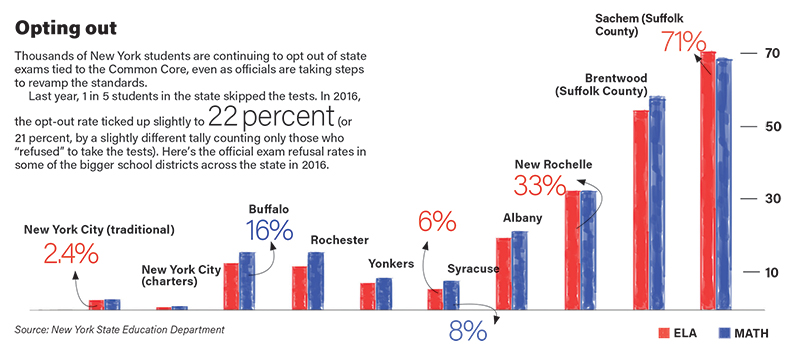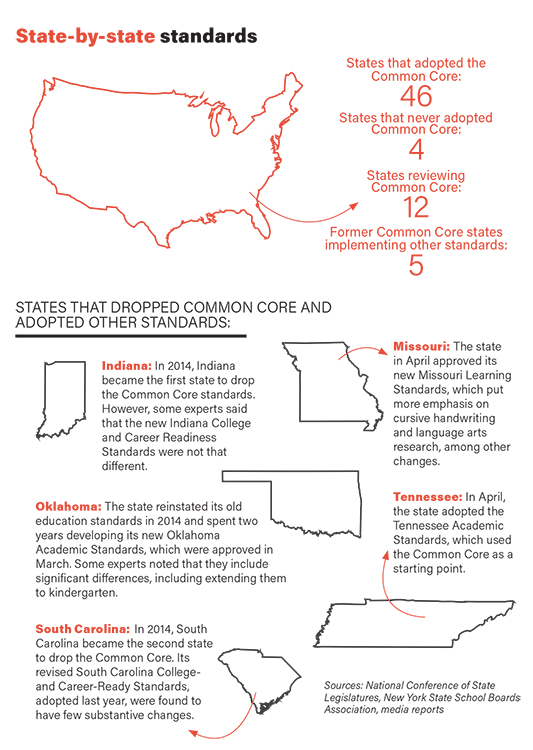Are New York's Common Core changes a reboot or a rebrand?
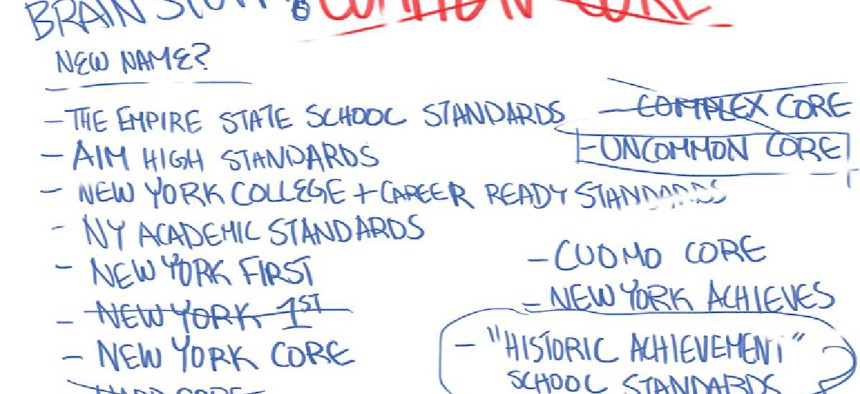
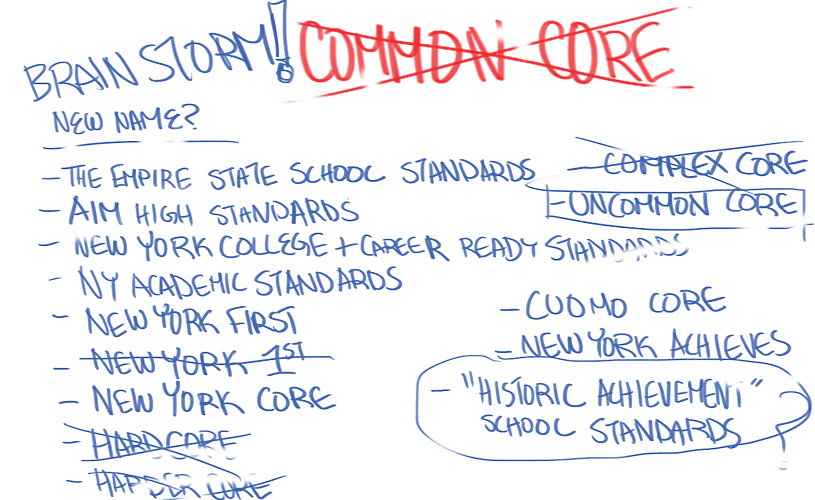
In 2014, Gov. Andrew Cuomo faced a general election challenge from Republican Rob Astorino. The governor was popular in the state’s urban centers, while Astorino – who ultimately won a majority of upstate counties – focused on expanding his base in suburban areas. At the time, anger over the state’s flawed and rushed implementation of the Common Core standards was reaching a boiling point. About 20 percent of students in grades 3-8 during the 2014-15 school year opted out of the state tests, which were tied to the standards, with even higher opt-out rates in more affluent school districts in the suburbs. Seeking to capitalize on the growing anger, Astorino created the “Stop Common Core” party and ballot line.
Cuomo also faced a revolt by New York State United Teachers, the statewide teachers union, in response to his push for a tougher teacher evaluation system tied to students’ performance on the state tests. NYSUT pointedly declined to endorse Cuomo in the 2014 gubernatorial race. Although Cuomo was re-elected by a comfortable margin, the union’s pressure, along with the rising outcry from parents and students protesting against the Common Core standards, ultimately led to a rare reversal from the governor.
In September 2015, just weeks after the news that the number of students skipping the state’s standardized tests had quadrupled to more than 200,000, Cuomo called for a “total reboot” of the underlying standards. The governor set up a 15-person “Common Core Task Force” to review the standards, and it came back with recommended changes by December.
“The Common Core was supposed to ensure all our children had the education they needed to be college and career-ready – but it actually caused confusion and anxiety,” Cuomo acknowledged when the task force’s final report was released. “Today, we will begin to transform our system into one that empowers parents, teachers and local districts and ensures high standards for all students.”
The state is now making its revisions, following the lead of a few states that have made changes to the Common Core and joining nearly a dozen states actively reviewing the standards. The jury is still out on whether New York’s new standards will be an improvement, though a number of education experts predict that the state will end up with something very similar to the original Common Core – albeit with a new name.
While no one knows at this point what the standards will look like, similar efforts in several states to review and rebrand the Common Core standards resulted in few real changes.
“We saw that Indiana and South Carolina had gone through this whole process, renamed their standards, but the comparisons that were made between the traditional Common Core learning standards and those that were eventually approved differed very little,” said Tim Kremer, the executive director of the New York State School Boards Association.
A report issued this summer by Kremer’s organization documented the backlash in Indiana by critics who felt the state’s new standards were too similar to the Common Core. In South Carolina, independent experts found that the state’s revisions “reflect no substantive changes in overall expectations.”
Patte Barth, director of the National School Boards Association’s Center for Public Education, predicts that new education standards being developed in states like New York won’t differ that much from the Common Core, either. “People were upset with Common Core because it happened without much, if any, public discussion,” she told NYSSBA. “People did not feel they had buy-in with the process. With a public review of the standards, states are now having that discussion. Even if standards remain substantially the same, stakeholders will at least know they had a role in them.”
The idea of “rebranding” the Common Core in New York was floated last September by former state Board of Regents Chancellor Merryl Tisch, but some education experts interviewed by City & State argued that the overhaul will do little to change people’s opinions.
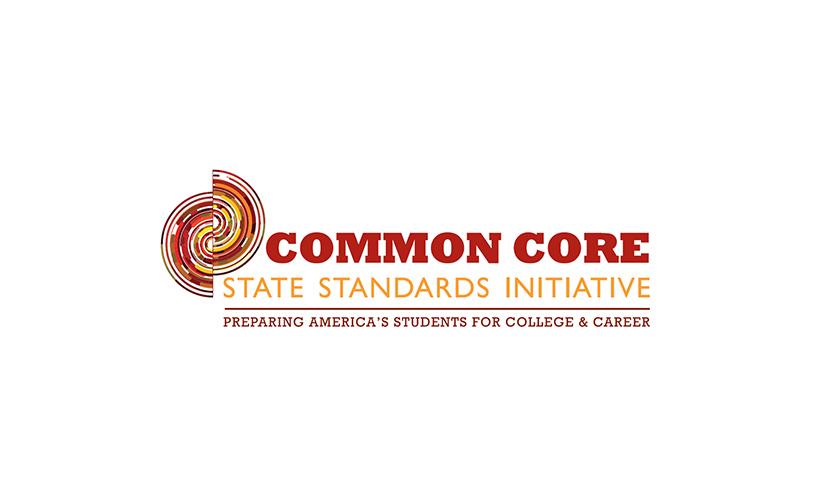
Whenever a government program, agency or piece of legislation starts to get too stale or too complicated – or even worse, too controversial – one strategy is to sweeten thing up by finding a new name for it.
One notable example is the upcoming re-branding of the Common Core standards in New York. But it’s by no means the first political renaming – and undoubtedly it won’t be the last, either.
– Jon Lentz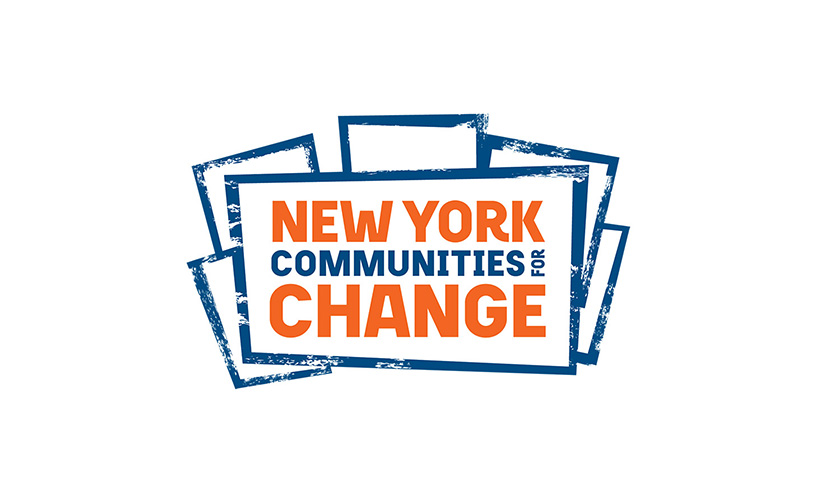
ACORN – New York Communities for Change
The Association of Community Organizations for Reform Now, or ACORN, shut down in 2010 after a scandal in which staffers were secretly recorded giving advice to two conservative activists posing as a pimp and a prostitute. However, the group was later reborn as New York Communities for Change, a labor-backed nonprofit close to Mayor Bill de Blasio.
Atlantic Yards – Pacific Park
Brooklyn’s Atlantic Yards development, a project spearheaded by the Empire State Development Corporation and Forest City Ratner, was criticized for its delays, lack of transparency and use of eminent domain. Developers changed its name in 2014 to Pacific Park, purportedly to mark a new phase in the project.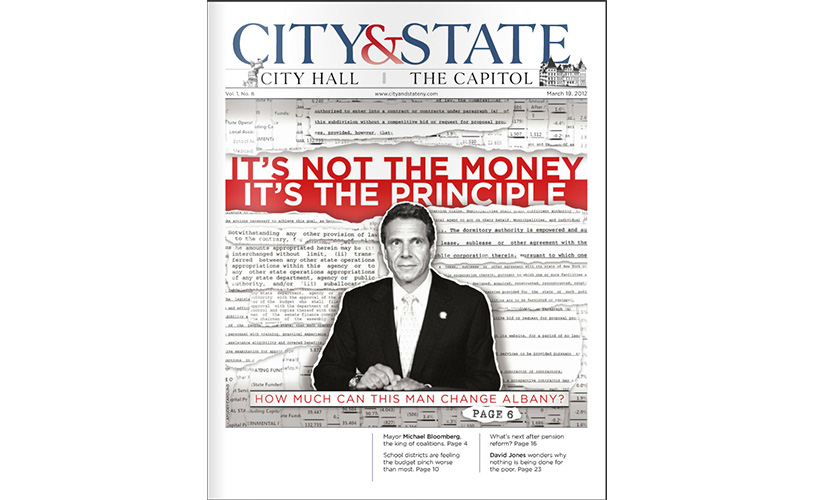
City Hall and The Capitol – City & State
Political publications can change their names, too. In fact, City & State was formed through the merger of City Hall and The Capitol, a fairly easy transition since the same staff produced both titles. Similarly, Politico New York recently became the new name of Capital New York, which if nothing else fully eliminated the confusion over Capital and The Capitol.
Common Core – Indiana College and Career Ready Standards
Indiana was one of the first states to drop the Common Core and replace it with its own educational standards, which were dubbed the Indiana College and Career Ready Standards. However, some experts said there was little change beyond the new name.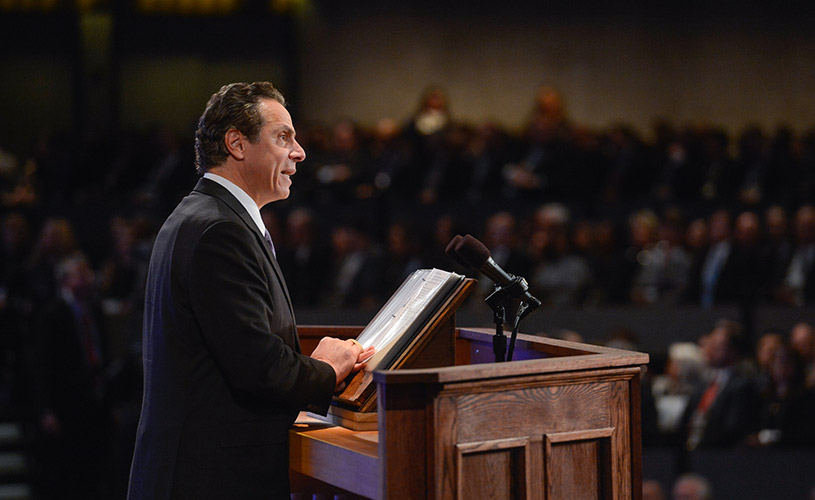
Deficit Reduction Assessment – Gap Elimination Adjustment
When New York was facing a fiscal crisis in 2009, state lawmakers passed a budget that included a Deficit Reduction Assessment, a steep reduction in school aid that was partly offset by federal stimulus funds. In subsequent years it was renamed the Gap Elimination Adjustment, and it continued to slash education funding up until this year’s budget.
Dormitory Authority of the State of New York – DASNY
Acronyms occasionally transition into regular words, such as “laser” (light amplification by stimulated emission of radiation) and “scuba” (self-contained underwater breathing apparatus). Similarly, the Dormitory Authority of the State of New York in recent years has emphasized its abbreviated form, DASNY. Other examples in this vein include CUNY, SUNY, NYPA, LIPA, JCOPE and NYSERDA.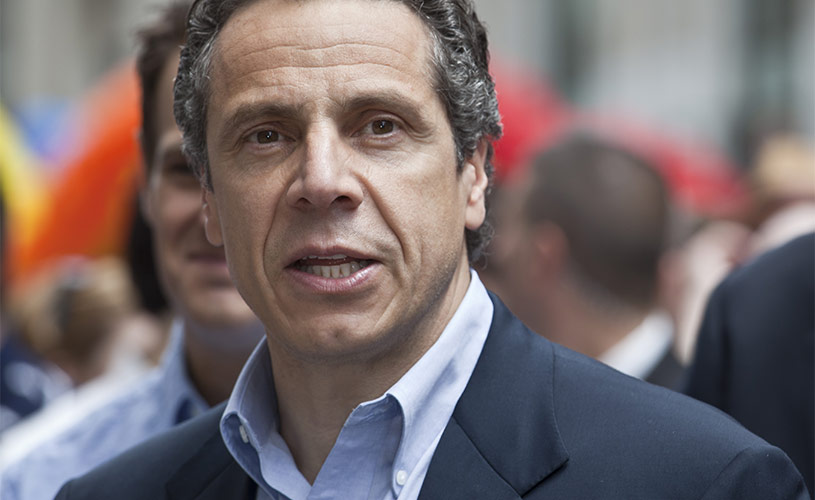
Education Investment Tax Credit – Parental Choice in Education Act
Last year, Gov. Andrew Cuomo tried to re-brand a stalled bill that would offer tax credits for private and public schools, euphemistically calling it the Parental Choice in Education Act. The name didn’t catch on – lawmakers, advocates and the media all stuck with the old name, the Education Investment Tax Credit – and the bill is still stuck in Albany.
Federal National Mortgage Association – Fannie Mae
The Federal National Mortgage Association, created in 1938, was shortened to FNMA, which sounded enough like Fannie Mae for it to stick. Similarly, Fannie Mae spinoff Ginnie Mae is the Government National Mortgage Association, or GNMA. The name Freddie Mac, less intuitively, is derived from the Federal Home Loan Mortgage Corporation, or FHLMC. All three have dropped their acronyms while wholly adopting their human-like monikers.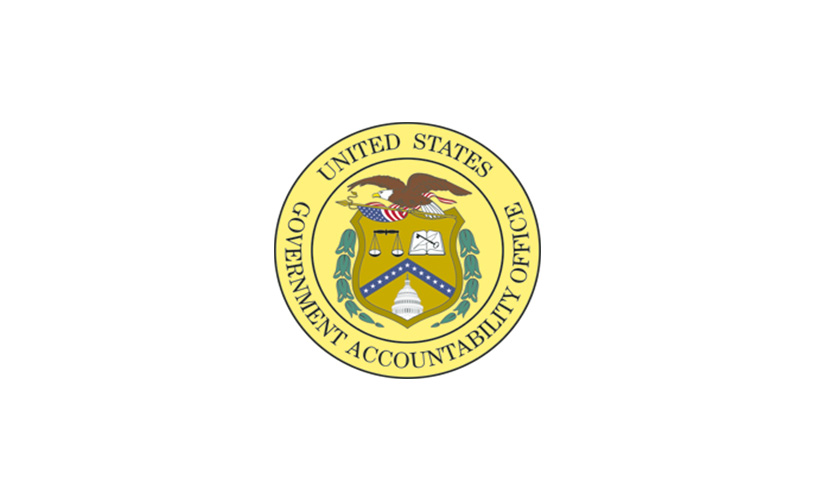
General Accounting Office – Government Accountability Office
The General Accounting Office was created in 1921 and tasked with providing reports on the spending of public funds. In 2004, lawmakers decided that the Government Accountability Office would be more apt, given that the congressional watchdog’s scope extends beyond financial matters. The best part? It can still be called the GAO.
Government Printing Office – Government Publishing Office
In another change that was decades in the making, the Government Printing Office in 2014 was re-branded as the Government Publishing Office. Established in 1860, the GPO had expanded beyond print into digital record-keeping, and lawmakers updated its name accordingly.
Health and Hospitals Corporation – Health + Hospitals
The New York City Health and Hospitals Corporation, a large but financially struggling public health care system, announced a re-brand as NYC Health + Hospitals last fall. The new name, which drops the term “corporation,” was described as a reflection of a shift away from a hospital-centric approach. No word from Health + Hospitals on whether that “+” is pronounced “plus” or “and.”
Patient Protection and Affordable Care Act – Obamacare
President Barack Obama’s landmark health care legislation is perhaps his most significant domestic policy accomplishment, so it’s not surprising that the term “Obamacare” has caught on. However, Republicans have used it to try to link the president to an initiative that remains controversial – and the administration has reverted to using the original “Affordable Care Act” phrasing.
Planned Parenthood Association of Hidalgo County – Access Esperanza Clinics Inc.
In 2014, a health care network in Texas cut ties with Planned Parenthood, the nonprofit reproductive health care provider, and relaunched as Access Esperanza Clinics. Republicans have battled Planned Parenthood over abortion, and in Texas the clinics made the move to retain state funding. Some say Planned Parenthood should change its name, too, to reflect a broader focus on women’s health.
Stop Common Core Party – Reform Party
In his long-shot bid against Gov. Andrew Cuomo in 2014, Westchester County Executive Rob Astorino created the Stop Common Core Party to capitalize on growing discontent with the controversial education standards. After losing the race, he re-named it the Reform Party in order to broaden the appeal – although the move could make enemies among the state’s other political parties, too.
Warren Wilhelm Jr. – Bill de Blasio
New York City’s mayor was born Warren Wilhelm Jr., changed his name to Warren de Blasio-Wilhelm after college, and finally settled on Bill de Blasio, which he officially adopted just before he was elected to the New York City Council in 2001. De Blasio suggested that the change was due to a troubled relationship with his father, and not for political reasons.
“I definitely think it’s a rebranding and a desire to outsmart the opt-out movement by saying it’s not the Common Core any more in the same way that the (teacher evaluation) tests were changed slightly to also present a kinder, gentler picture of state accountability,” said David Bloomfield, an education professor at Brooklyn College and the CUNY Graduate Center. “The danger is the slight difference it will make in public attitudes will be offset by the confusion it adds to among the educators who have to do the actual teaching.”
Lisa Rudley, one of the founding members of opt-out group NYS Allies for Public Education, said that rebranding the standards wouldn’t trick critics. “I think it will just aggravate everybody and by the time everybody expels all their energy again and demands a process that’s fully vetted, (they’ll give up),” she said. “It seems like a delay tactic and then people burn out and it just stays.”
Some members on the state’s Common Core review committees have told Rudley that they are frustrated by the process, she said. “They’re feeling that it’s a very controlled environment and it’s not accepting to get more changes than people would like,” Rudley said. “The organizers of all the committees seem to be almost predetermined on what they’re going to change and what they’re not going to change.”
Rudley also criticized the relatively short period of time the committees have to meet to review the standards. The standards review committees began meeting in March and finished their work in July. “We can safely say that the Common Core was not vetted by New York educators prior (to its implementation). So, why not give them the time and the process to do a real good look at it?” Rudley asked. “I would go as far as to say that the process is predetermined.”
![]() Click to enlarge
Click to enlarge
Others in the education arena are more optimistic about the process, saying they have seen a drastic shift in the state Education Department’s engagement with stakeholders this time around. Kremer, the executive director of the New York State School Boards, said that while other states have made only minimal changes, he believes that New York is going through a “pretty thorough process” of review.
In the fall of 2015, the state Education Department received 10,500 responses to an online survey of the current standards. Following the survey, 138 parents and teachers were selected to join the English Language Arts and Mathematics Standards Review Committees, which began meeting this past spring. The stated purpose of these committees was to review each standard at every grade level to recommend possible revisions and additions to the standards.
Suraj Gopal, a New York City special education teacher who sat on the committee revising the math standards, said he was excited about the upcoming changes. “We basically went through all the standards with a fine-tooth comb and looked for language that was vague and looked for poorly sequenced standards,” Gopal said during a panel discussion last month hosted by City & State, High Achievement New York and the Center for American Progress.
The committee review process was completed in July, and will be followed by a public comment period. The final standards will be revised in October and November, according to an Education Department timeline, and the state Board of Regents will consider them around the end of the year. The initial implementation of the new standards will begin in time for the start of classes in September 2017, with revised tests being implement in the 2018-19 school year.
Jeanne Beattie, a spokeswoman for the state Education Department, said the agency’s goal is to have updated draft standards that reflect the feedback it has received from teachers, administrators, parents, business leaders, higher education representatives and other stakeholders.
“While it’s much too early to say precisely what the revised standards will look like, as the committee’s work is not yet finished, it’s fair to say that there will be changes,” Beattie said. “Even with these changes one thing is certain – the standards continue to be rigorous and to challenge our students to do more.”
MaryEllen Elia, the state education commissioner, said there would be “many discussions with the Regents” regarding the revisions and input from the public. “At some point, probably in December or January, we will, as the Regents group, be voting on whether or not to move forward on those suggested standards,” Elia said at City & State’s recent On Education conference. “When you change standards, of course, the assessments ultimately have to be changed. They won’t change in a year. They’ll take time. And we will have committees of practitioners from New York state, teachers and others, working with us to change our standards.”
State Sen. Carl Marcellino, the chairman of the state Senate Education Committee, said he was confident in the state Board of Regent’s ability to review and finalize the standards, adding that it is best to let them handle that responsibility.
“We try to let the Board of Regents do their job,” Marcellino said. “We try to avoid getting into the political sphere where the Legislature would start passing bills to include this, include that. Then it becomes a political monster, and frankly I don’t think that would be productive for anybody.”
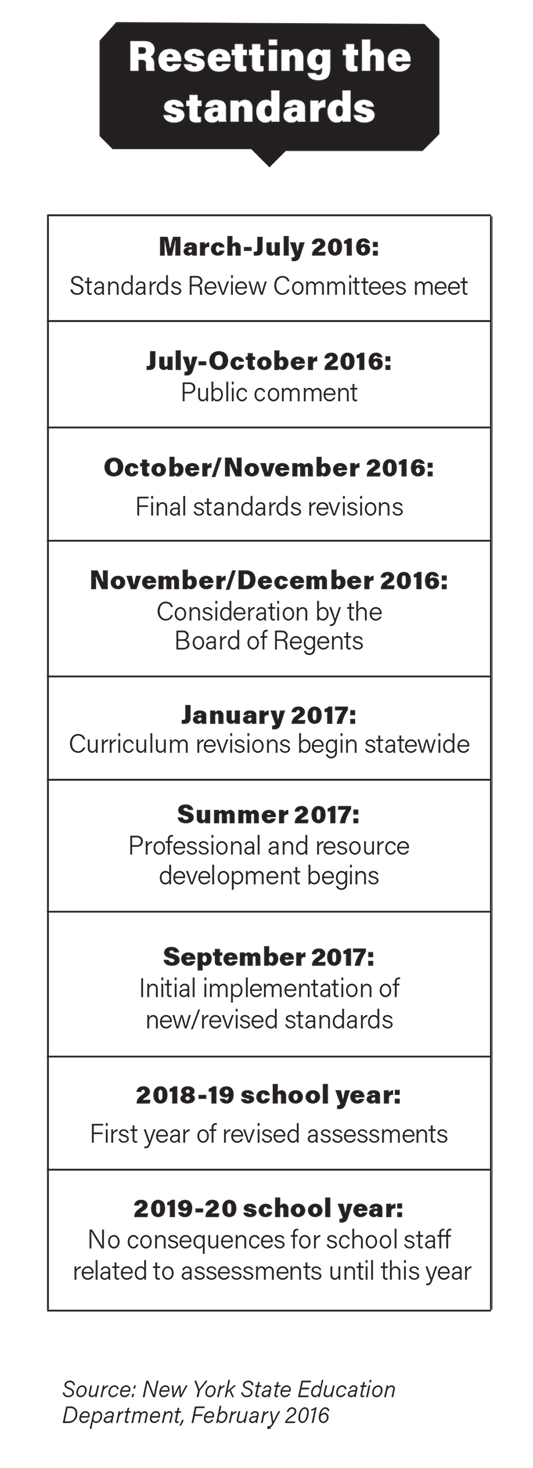
In 2009, President Barack Obama signed the American Recovery and Reinvestment Act, which included $4.35 billion for his federal Race to the Top initiative. If states agreed to certain education policy requirements, such as implementing higher standards intended to make students more college- and career-ready and instituting annual professional performance reviews for teachers and principals, they could receive a share of the money.
New York adopted the Common Core standards in 2010 and implementation began in the 2011-12 school year. Almost immediately, parents and educators raised concerns about the rushed implementation that was done while seeking little to no input from stakeholders.
Marcellino said the lure of federal money ultimately drove the state to quickly adopt the standards. New York received about $700 million in Race to the Top funding.
“Just about everybody had problems with the way the Common Core was rolled out. It was done in a haphazard way. It was done too quick. The lure of money was there, which I had asked our people not to take,” Marcellino said. “I said it was too much and it took control away from the states and put it in the hands of the federal government and I don’t think that’s a good idea.”
Both former state Education Commissioner John King and Tisch, who oversaw the implementation of Common Core, have since left their positions, and the state’s education system is now under new leadership. King, who went on to become the U.S. secretary of education, was replaced by Elia, while Betty Rosa, an outspoken critic of the Common Core, is now the Board of Regents chancellor.
“The whole issue is, people, when I came a year ago, were at a high fever pitch. They were very stressed,” Elia said. “I think it was important for the work I did initially, which was to get around the state, talk to people, hear what they felt were really needed changes and then, with the Regents, supporting that.”
![]() Click to enlarge
Click to enlarge
Not everyone agrees that New York’s Common Core review process has a predetermined outcome. Kyle Belokopitsky, the executive director of the New York State PTA, said she’s hopeful the agency has learned from its past mistakes.
“The jury’s still out until we see what happens, but I do know there’s a lot of people engaged in this process,” she said. “They’ve been meeting regularly to review the standards. I actually just spoke yesterday to some of the parents that were on a standards review committee and they were hopeful. I can’t imagine SED would be going through this whole process if they were just going to ignore everyone’s input.”
Bob Lowry, the deputy director for advocacy research and communications for the state Council of School Superintendents, also touted the state’s process.
“We do not know what will come out of the process the Education Department is following and whether we would support the changes that emerge. But the process is a good one,” he said in a statement. “The process you would need to follow is roughly the same and would probably resemble what SED is doing – e.g., survey educators and others about what is good or bad about the current standards, convene committees to develop actual revisions, and circulate a draft to the public for reaction.”
NYSUT Vice President Catalina Fortino said the work the state Education Department is doing to engage stakeholders is heartening, but said the union will be specifically looking for the agency to continue to seek out teacher input after the review process is finished.
“Now comes the really crucial part of this process, which is for SED to design a feedback mechanism to the field. One that would engage teachers, one that would be teacher-friendly and one that would really capture the working knowledge of the teachers on the standards,” Fortino said. “That’s going to be key because what we don’t have to have is decisions made by a few, we want to have standards shaped by what’s working in the field.”
Marcellino believes that the state has an opportunity to set a new tone for the education system, but ultimately it can’t appease all critics. Kremer agreed, and argued the state shouldn’t try to win any popularity contests.
“There will be people who will always feel as if these standards are not age-appropriate and they may believe that whatever revisions are done, even after a very extensive process that engages a lot of stakeholders, it’s still not right. We’re always going to have people who are not satisfied that the standards we put forth are the right ones,” Kremer said. “But I would hope people would say there has been sufficient time to get our head around these things and there’s been a lot of stakeholder input around this process.”
